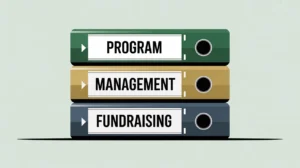Importance of Cross-Subsidization
Cross-subsidization allows nonprofits to use surplus revenues or unrestricted funds from one program or activity to cover deficits or underfunded costs in another. This matters because many mission-critical activities, especially advocacy, community organizing, or capacity building, are often underfunded by donors. For nonprofits in social innovation and international development, cross-subsidization provides a strategic tool to balance restricted and unrestricted income streams, ensuring that all essential work is sustained. Boards and donors view it as a sign of financial creativity and resilience when managed transparently.
Definition and Features
Cross-subsidization is defined as the practice of channeling excess revenues from one area of activity to support another area with funding gaps. Key features include:
- Revenue Sources: earned income, social enterprise profits, or unrestricted donations that generate surpluses.
- Application: covers costs in programs that lack sufficient direct funding.
- Strategic Balance: aligns with organizational priorities to sustain impact across initiatives.
- Transparency: requires clear reporting to avoid donor confusion or misallocation concerns.
Cross-subsidization differs from full cost recovery because it relies on surpluses or flexible funds rather than ensuring each program is fully funded on its own.
How This Works in Practice
In practice, nonprofits implement cross-subsidization through intentional budgeting and fund management. For example, a nonprofit may operate a fee-based training program that generates surpluses, which are then used to support policy advocacy or grassroots work that donors rarely fund. Finance teams ensure proper segregation of funds in accounting systems, while boards approve transfers to align with mission priorities. Clear communication with donors is critical to demonstrate that their restricted funds are honored while unrestricted funds are strategically redeployed.
Implications for Social Innovation
For nonprofits in social innovation and international development, cross-subsidization provides the flexibility to sustain critical but underfunded initiatives. Transparent reporting reduces information asymmetry by showing how unrestricted or surplus revenues are used to strengthen the overall mission. Donors often appreciate organizations that use entrepreneurial approaches to diversify funding and cover systemic costs. However, reliance on cross-subsidization can mask structural underfunding if not managed carefully. By applying it strategically, nonprofits can sustain mission-critical activities, innovate responsibly, and balance equity across programs while pursuing long-term systemic change.







